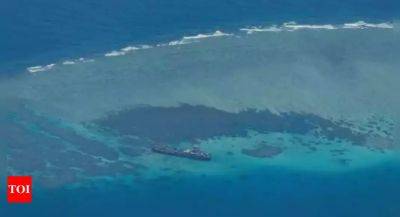Japanese are worried and confused after first-ever megaquake advisory. What does it mean?
Japan, one of the most earthquake-prone nations on earth, issued its first-ever "megaquake advisory" last week after a powerful quake struck off the southeastern coast of the southern main island of Kyushu.
The magnitude 7.1 quake caused no deaths or severe damage but the advisory has led to widespread confusion and a lingering sense of worry -- in a country well accustomed to regular quakes -- about when the next big one will hit.
The Associated Press explains what the advisory means, what people are being told to do, and what could happen if a massive quake hits Japan.
The Japan Meteorological Agency issued the advisory after concluding that the magnitude 7.1 quake that struck on Aug. 8 on the western edge of the Nankai Trough increased the likelihood of another big one.
There is a 70 to 80 per cent chance of a magnitude 8 or 9 quake associated with the Nankai Trough within the next 30 years, and the probability is now "higher than normal" after the latest quake, the JMA says.
But that is not a prediction that a megaquake will happen at any specific time or location, says University of Tokyo seismologist Naoshi Hirata, who heads the JMA's experts panel. He urged people to remain cautious and prepared.
The Nankai Trough is an undersea trench that runs from Hyuganada, in the waters just off the southeastern coast of Kyushu, to Suruga Bay in central Japan. It spans about 800 kilometers (500 miles) along the Pacific coast.
The Philippine Sea Plate there slowly pulls down on the Eurasian Plate and causes it to occasionally snap back, an action that could lead to a megaquake and tsunami, JMA says.
The last Nankai Trough quake off Shikoku in 1946 recorded a preliminary magnitude of 8.0 and killed more than 1,300 people.
In 2013, a government disaster prevention team said a magnitude 9.1 Nankai Trough quake could generate a tsunami exceeding 10 meters (33 feet) within minutes, killing as many as 323,000 people, destroying more than 2 million buildings and causing economic damage of more than 220 trillion yen ($1.5 trillion) to large swaths of Japan's Pacific coast.
As a result of the "megaquake advisory," Japanese Prime Minister Fumio Kishida canceled his







